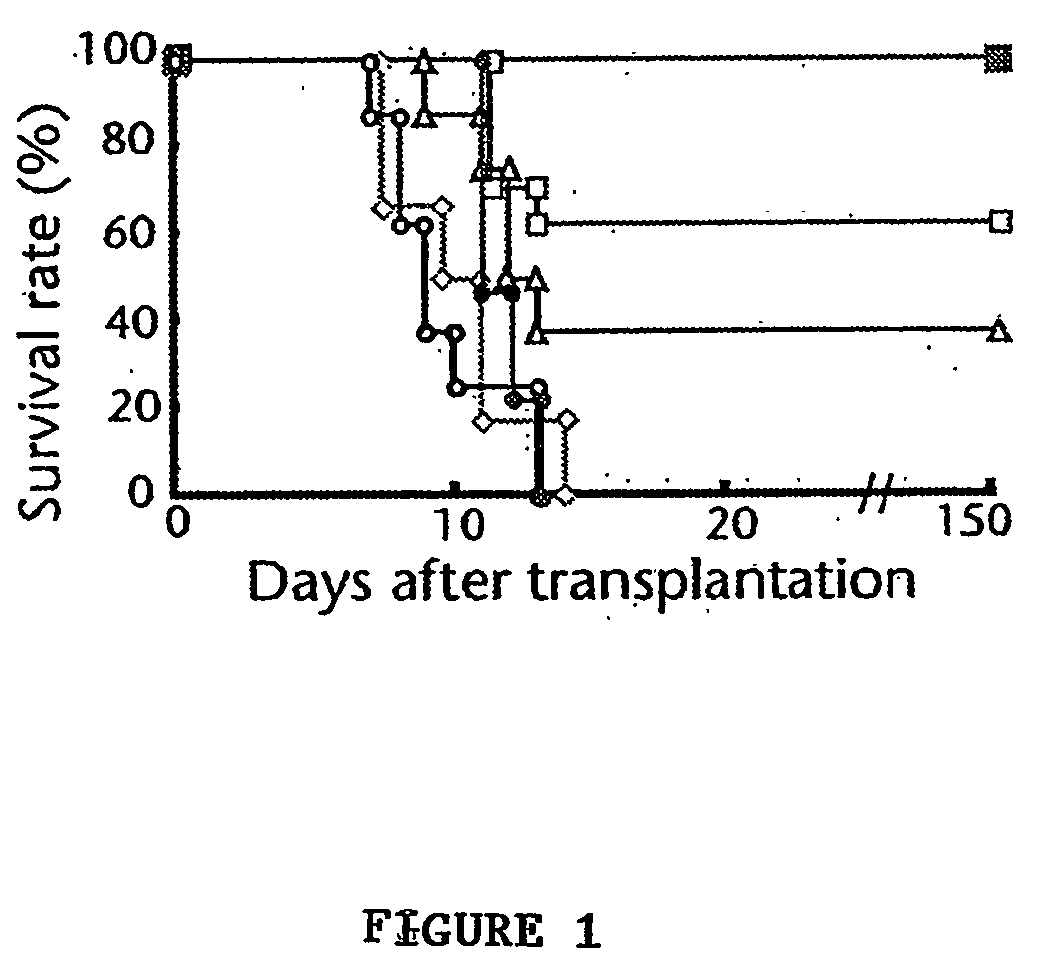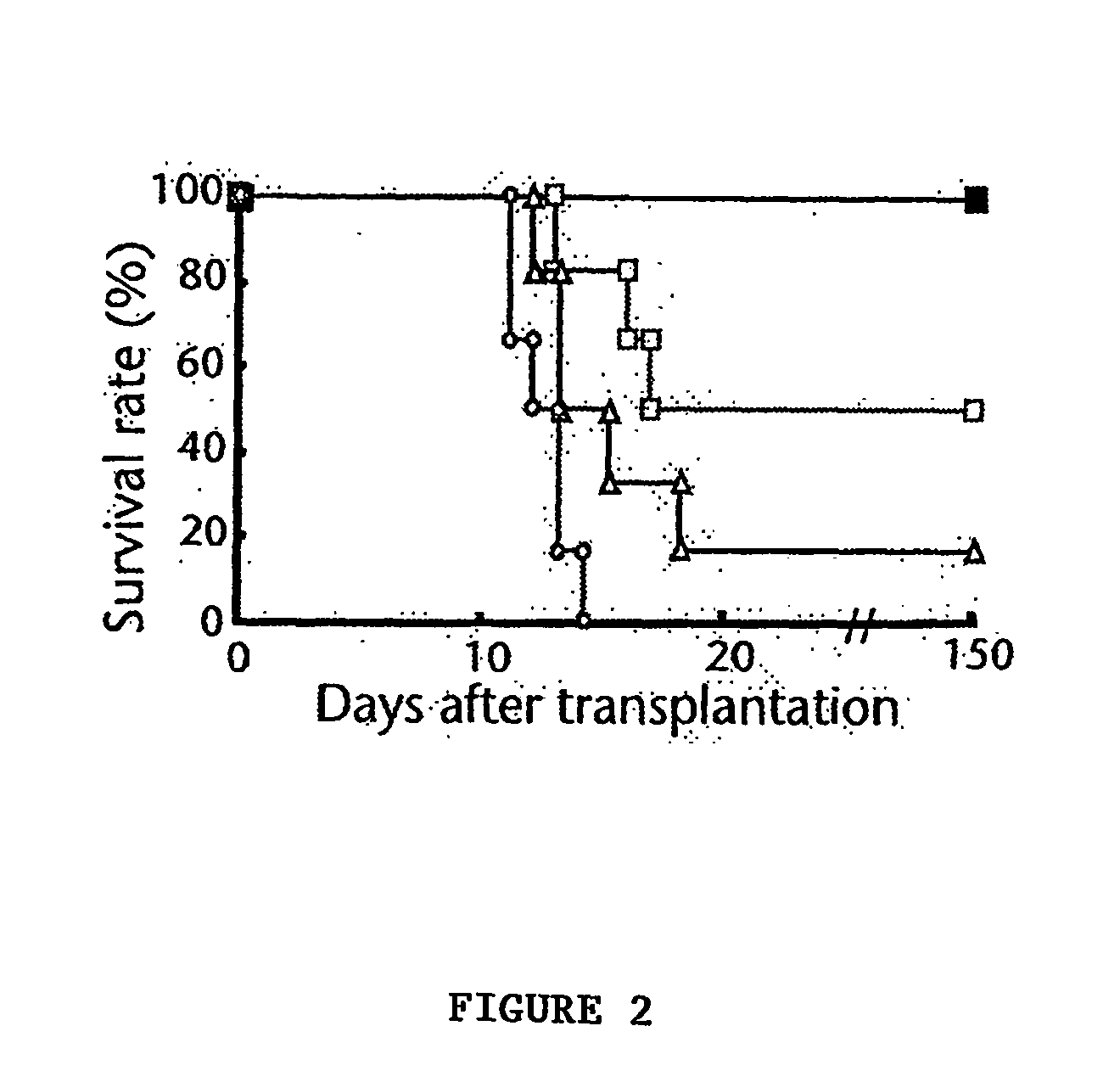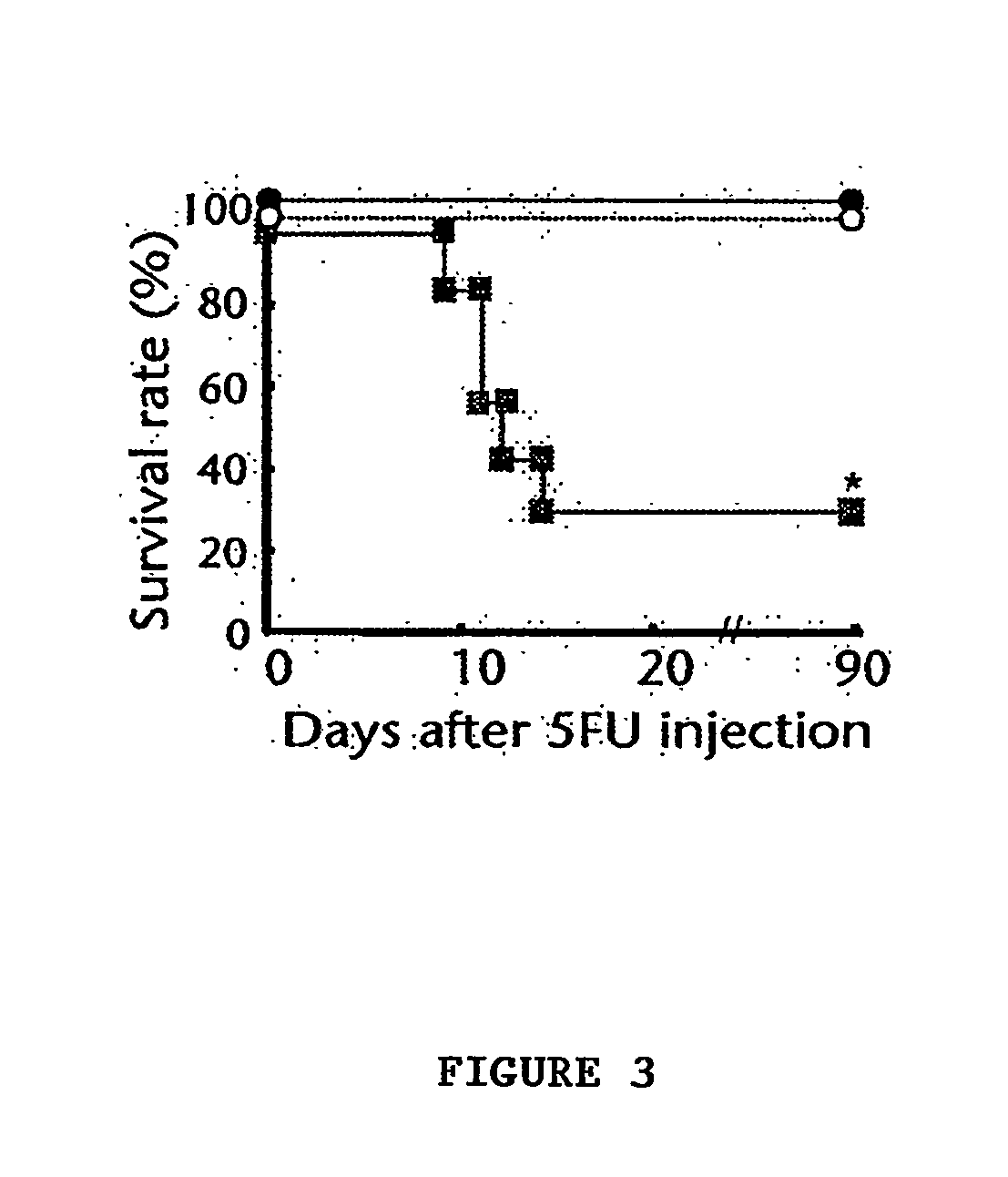Isolation and mobilization of stem cells expressing vegfr-1
- Summary
- Abstract
- Description
- Claims
- Application Information
AI Technical Summary
Benefits of technology
Problems solved by technology
Method used
Image
Examples
example 1
[0108] The present example investigates expression of VEGFR-1 on stem cells. Specifically, neutralizing and non-neutralizing MAbs were generated that selectively bind either human or mouse VEGFR-1 using standard techniques. Human fetal liver (FL) (15-16 weeks of gestation) and cord blood (CB) were obtained from fetuses. CD34+ cells were isolated from FL and CB using standard immunomagnetic techniques (MACS; Miltenyi Biotech). Flow cytometry analysis indicated 85-95% purity of the CD34+ fraction with 45-55% recovery. CD34+ cells (1×105 FL or CB) were incubated for 30 minutes at 4° C. with fluorescein isothiocyanate (FITC) or phycoerythrin (PE) conjugated MAbs; human CD34-PE, CD38-PE (Beckton Dickinson), CD15-PE (Immunotech), AC133-PE (Miltenyi Biotech), CD14-PE (PharMingen), VEGFR-1-FITC (clone 6.12; ImClone Systems). The cells were analyzed by two-color flow cytometry using a Coulter Elite flow cytometer.
[0109] Using FITC labeled MAbs to the extracellular domain of VEGFR-1, we foun...
example 2
[0110] This example investigates the stem cell potential of VEGFR-1+ cells. Specifically, the stem cell potential of VEGFR-1+ cells was evaluated in in vivo repopulating assays including non-obese diabetic (NOD)—severe combined immunodeficiency (SCID) mouse repopulating cells.
[0111] To this end, freshly isolated human CB CD34+, purified CD34+VEGFR-1+ and CD34+VEGFR-1− cells were transplanted into sublethally (3.5 Gy) irradiated NOD / SCID mice. Briefly, Human CD34+ mononuclear cells (MCs) were isolated from CB and incubated with biotinylated anti-VEGFR-1 Ab (ImClone Systems). CD34+VEGFR-1+ MCs were separated using immuno magnetic separation (Miltenyi Biotech) according to the manufacturer's instructions. The purity of the VEGFR-1+ MCs preparations was assessed by flow cytometry using the fluorescein isothiocyanate (FITC)-conjugated anti-VEGFR-1 antibody (clone 6.12; ImClone Systems) and was found to be 85-95%. The immunocompromised NOD / SCID mice (Jackson laboratory) were handled unde...
example 3
[0114] The present example investigates expression of VEGFR-1 in murine stem cells. To assess whether VEGFR-1 is also expressed in the murine stem cells, a cohort of mice were treated with 5-fluorouracil (5FU), allowing for enrichment of non-cycling hematopeotic stem cells (HSCs). Briefly, mice were treated with a sublethal dose of 5FU (300 mg / kg), resulting in apoptosis of rapidly cycling progenitors and precursors, while non-cycling quiescent cells mostly of stem cell potential are spared. This is followed by rapid reactivation of G0 stem cells and reconstitution of lymphohematopoietic cells. The cells were then analyzed by two-color flow cytometry using a Coulter Elite flow cytometer.
[0115] Flow cytometric analysis showed that 5.0±0.3% (N=6) of 5FU-pretreated BALB / c BMMCs expressed VEGFR-1+. Within the VEGFR-1+ population, 35.7±0.7% were Sca-1+ while 31.4±0.3% were c-kit positive.
PUM
| Property | Measurement | Unit |
|---|---|---|
| Area | aaaaa | aaaaa |
Abstract
Description
Claims
Application Information
 Login to View More
Login to View More - R&D
- Intellectual Property
- Life Sciences
- Materials
- Tech Scout
- Unparalleled Data Quality
- Higher Quality Content
- 60% Fewer Hallucinations
Browse by: Latest US Patents, China's latest patents, Technical Efficacy Thesaurus, Application Domain, Technology Topic, Popular Technical Reports.
© 2025 PatSnap. All rights reserved.Legal|Privacy policy|Modern Slavery Act Transparency Statement|Sitemap|About US| Contact US: help@patsnap.com



